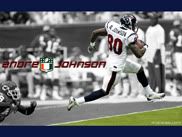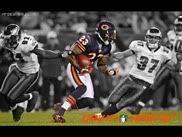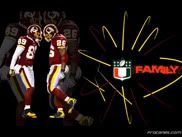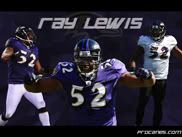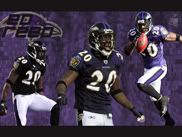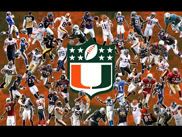CLICK HERE TO ORDER!
For Portrait in Tribute to Slain Player, a Legal Snare
Sep/22/08 11:28 PM Filed in: Sean Taylor

The painting is a montage of Taylor's football career, from his days at the University of Miami through his 3 1/2 seasons as a Redskins safety. Football fans can view the painting at Champps Americana restaurant in Arlington's Pentagon Row, where it has hung since the Sept. 4 start of the Redskins season.
But the tribute painting has seen kudos and conflict on its way to the tavern wall.
After about 200 hours of work, Swain finished the painting and contributed it to an art exhibition that he had already committed to at Children's National Medical Center. While it hung there in March, a group of players visited the hospital as part of the "Redskins Read" literacy program. It caught the attention of Betti-Jo "BJ" Corriveau, the team's vice president for community and charitable programs, and wide receiver Santana Moss. Corriveau expressed casual interest in buying the original; Moss wanted to order three prints.
This is when the trouble began.
In an e-mail exchange, Swain quoted Corriveau a price of $20,000. She responded by asking him if he would donate the portrait so that it could be displayed at FedEx Field. He said no.
"I thought it was fairly insulting," Swain says. "I wouldn't call the Redskins and say I want season tickets and free hot dogs for the rest of the year. I expect to pay something."
Swain had signed a contract to give 25 percent of the proceeds to the children's hospital. A donation would have meant a loss of $5,000 to the hospital.
The next e-mail that Swain received from Corriveau read:
"I understand that you need to sell your painting and the prints but please know that you need to remove our logo and the NFL logo from all images."
The sale fell through, and Swain hasn't removed any of the logos from the painting. It made its way to the Champps wall after Swain cold-called the restaurant about hanging the artwork for its Redskins kickoff party. "Better other people see it than sitting in the house collecting dust," he says.
Swain, 41, is an Australian immigrant who lives in Kensington and runs a landscaping business. This isn't his first celebrity tribute painting. In 2006, his portrait of "Crocodile Hunter" Steve Irwin hung at the Mansion at Strathmore. He has also painted Bill Clinton, Halle Berry and Diane Sawyer.
Swain is afraid the Redskins will take legal action against him, so he has consulted with an intellectual-property lawyer and taken the painting off the market. At Champps, a small placard lists Swain's phone number but no price.
This squabble has legal precedent, says Georgetown University law professor Rebecca Tushnet. Tiger Woods sued sports artist Rick Rush in 2000 over a painting of Woods winning the Masters. The golfer lost.
"Courts have been confronting these issues, and they are increasingly coming down on the side of the arts," Tushnet says. Although Woods was protecting his image and not a logo, both cases fall under the umbrella of intellectual-property law. "Basically, almost anything can be a trademark," Tushnet says. Think Michael Jordan flying toward the hoop.
The Moss transaction has hit a dead-end. Moss's manager Lily Stefano balked when Swain quoted her $5,000 to produce and ship the three custom four-foot-tall giclee prints (high-resolution reproductions of the original, produced from digital scans) to Moss in Miami. Stefano says she thought Swain's price was "sky-high," and she advised Moss to back off. Swain hasn't had contact with Corriveau or Stefano since April.
Reached by telephone last week, Corriveau didn't recall where she had left her dealings with Swain. "We had some conversations but never anything solid," she said. "It's a beautiful portrait." She didn't think Swain would be offended by her directive to remove the logos from the painting.
As product placements invade our world, so will they sneak onto canvases, Tushnet says: "The idea in general is that we want artists to be able to portray the world as they see it, and we live in a heavily branded world."
(washingtonpost.com)


